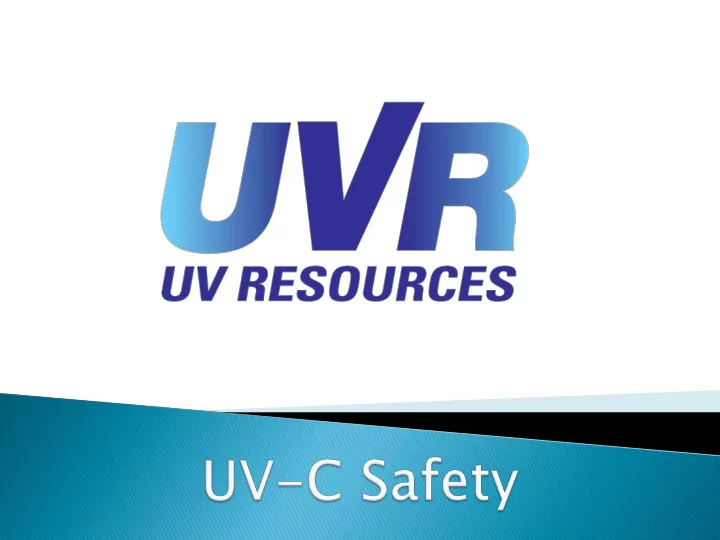

Understand what UV-C is Issues of exposure to UV-C Safety Measures to prevent exposure Protection Against Exposure Maintaining UV System
◆ The UV Light Spectrum ◆ 1nm = 1/1000 micron ◆ UV-A (315nm - 400nm) - Black lights and Sun tanning lamps, harmful to eyes ◆ UV-B (280nm - 315nm) Causes sunburn and Skin cancer ◆ UV UV-C (200nm - 280nm) ) Germic icidal idal & D Degrad ades es Structu tures res Sun irradiates all 3, but only UV-A and UV- B make It through the earth’s atmosphere. UV-C is filtered out The UV-C band width th is invisi sibl ble- the color seen in a UV- C lamp is “visible light” not UV -C. C.
CDC US Department of Health and Human Services NIOSH GSA Public Buildings Standard (since 2003) ASHRAE
UVC Breaks Thru the Cell Wall & “scrambles” DNA
• Chemical and mechanical cleaning can be costly, difficult to perform, and dangerous to maintenance staff and building occupants. Furthermore, the systems performance can begin to degrade again shortly after cleaning as organic and microbial deposits reappear or reactivate . • UV-C is an easy, cost-effective way to prevent the growth of bacteria and mold on system components and keeping surfaces clean continuously rather than “periodically restoring fouled surfaces” – meaning lower maintenance cost and, potentially, better HVAC system performance . • Removing and suppressing the formation of biofilms on coils should reduce airside pressure drop, increase heat transfer coefficient, and reduce fan and refrigeration system energy consumption .
Reflectivity: Most any surface reflects UV-C energy; therefore, in the presence of UV-C, there is virtually no protection, unless you are 100% “gowned up.”
UV- C, while not causing “permanent” damage in small doses can cause temporary corneal damage The cornea is like the skin in that it can be "sunburned" by exposure to too much UV radiation. This is called keratoconjunctivitis (snow blindness or welders flash) This condition usually does not present until 6 to 12 hours following the UV exposure Although very painful (often described as having sand in the eyes) this condition is usually temporary (a few days) because the corneal cells will grow back
UV radiation is a known carcinogen for human skin Because the biological effects are dependent on the time of exposure and the susceptibility of the individual exposed, it is considered prudent to prevent unnecessary skin exposure to UV sources
Typical UV-C Lamps (1 lamp) found in HVAC systems put out anywhere from 51-442 µW/cm 2
All access panels or doors to the lamp section, and panels or doors to adjacent AHU sections where UV radiation may penetrate or be reflected should have warning labels posted
RLM-X with 360 ° UV-C Distribution
Lamp sections of an AHU should have electrical disconnect devices Switches should be wired in series so that opening any access de- energizes the system
Through a view port is the safest way to view UV-C. Most all viewports block the UV-C bandwidth
Recommend not to enter a plenum with UV-C lamps on If it is absolutely necessary, Personal protective equipment (PPE) should be used: ◦ UV safety goggles ◦ UV face shields ◦ Long-sleeved, tightly-woven clothing that covers much of the body, and ◦ Gloves
➢ Annual Lamp Replacement ◦ Lamps are rated for 8760 hours (1 year) ➢ Recommend lamps be replaced annually to insure desired performance and to protect against equipment failure
Make sure to add di-electric gel to prongs and seat lamp properly
Summary mmary UV-C exposure can cause damage to the eyes and can burn the skin Access doors to plenums where UV-C is present should have an interlock safety switch & a toggle switch ✓ Never override the safety switch ✓ Viewports can be used to view UV-C lamps Do not ignore WARNING labels Do not enter a plenum with UV unless absolutely necessary and with PPE Put lamps on re-lamp schedule to properly maintain the system.
Recommend
More recommend